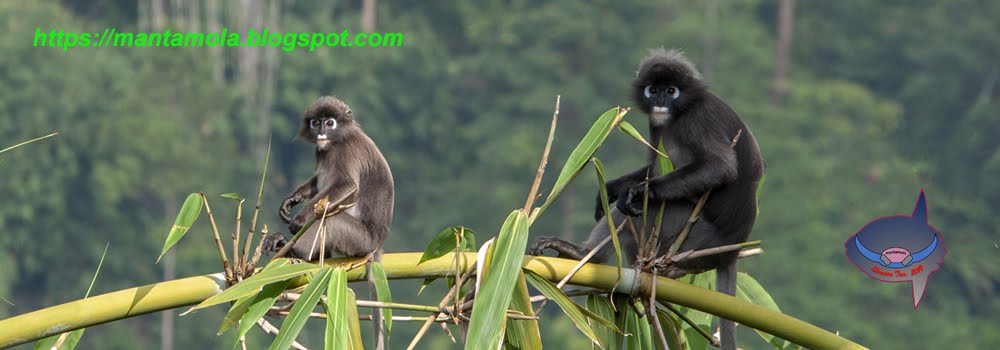After a short presentation from the NEA and the landfill tour,
 we head for the tidal area.
we head for the tidal area.Semakau has a natural shore that made up of different ecosystems like mangroves, sandy shore, rocky shores, seagrass lagoon & coral reefs. Each ecosystem supports a different variety of plants and animals. The natural part of Pulau Semakau that was not buried under the landfill now has the largest seagrass lagoon, mangroves and reefs in Singapore.
After the refreshing walk through the seagerass lagoon, we saw this nobel volute (Cymbiola nobilis).
 The white jelly thngs is the eggs.
The white jelly thngs is the eggs. 
We also saw this sea cucumber (Stichopus ocellatus) that with the unique eyespots. It was found near the seagrass lagoon. Sea cucumbers take in water through their anus to breathe and feed on detritus (dead plant and animal material) in the sand. The sand is taken in through the mouth, the detritus digested and the clean sand expelled through the anus.
 Upon noticed being watched, this branching anemones half retracted to it's tube and only partial tentacles are visible.
Upon noticed being watched, this branching anemones half retracted to it's tube and only partial tentacles are visible. This fan worm is a marine segmented worms that are attached to rocks or sand by their base with a marvellous feathery fan on its head.
This fan worm is a marine segmented worms that are attached to rocks or sand by their base with a marvellous feathery fan on its head.
Someone almost step on this moon snail that. Moon snails is a voracious predator that famous with its skill of drilling a hole through the shell of their prey and slowly enjoy their prey.
 A scallop – mmmm a famous logo that can be seen every where…
A scallop – mmmm a famous logo that can be seen every where… A cowrie (Cypraea sp.). Cowrie is getting very rare due to over collections.
A cowrie (Cypraea sp.). Cowrie is getting very rare due to over collections. A beautiful Heart cockle (Cardium cardissa)
A beautiful Heart cockle (Cardium cardissa) A baby upside down jelly fish that was found by TC.
A baby upside down jelly fish that was found by TC. We also saw this beautiful flatworm (Phylum Platyhelminthes) Flatworms has no skeleton and has a combination digestive/excretory system. It takes food in and gets rid of wastes through the same opening. They are more active when it is dark and cool
We also saw this beautiful flatworm (Phylum Platyhelminthes) Flatworms has no skeleton and has a combination digestive/excretory system. It takes food in and gets rid of wastes through the same opening. They are more active when it is dark and cool This is one of the biggest and most beautiful sea star that can be found in Semakau. - Knobbly Sea Star (Protoreaster nodosus). This is my group poses with the Knobbly Sea Star.
This is one of the biggest and most beautiful sea star that can be found in Semakau. - Knobbly Sea Star (Protoreaster nodosus). This is my group poses with the Knobbly Sea Star. Before we end the tidal walk, saw this red egg crab ( Atergatis integerrimus) that with some missing legs and pincer. The missing legs will be replaced when they next moult. Red egg crabs is the 2nd most poisonous crab in Singapore. No matter how desperate you are, red egg crab should never be consumed!
Before we end the tidal walk, saw this red egg crab ( Atergatis integerrimus) that with some missing legs and pincer. The missing legs will be replaced when they next moult. Red egg crabs is the 2nd most poisonous crab in Singapore. No matter how desperate you are, red egg crab should never be consumed!
 We also saw quite a number of soft corals and an anemones.
We also saw quite a number of soft corals and an anemones. While on the way back, we saw lots of Common Sea Star (Archaster typicus)
While on the way back, we saw lots of Common Sea Star (Archaster typicus)Stacking on one another doing things!! However, the position is to increase the chances of fertilization as common sea stars do not have internal fertilization.
We need to go through the forest to reach the pick up / wash up point. The short walk seems to be a long and exiting walk as most students do not brought their torch light with them. Walking in the forest in dark is exciting minus the annoying mosquitoes…..
After 3 days in a row of tidal walk at Semakau, I can’t wait to come back again soon.
After 3 days in a row of tidal walk at Semakau, I can’t wait to come back again soon.

No comments:
Post a Comment